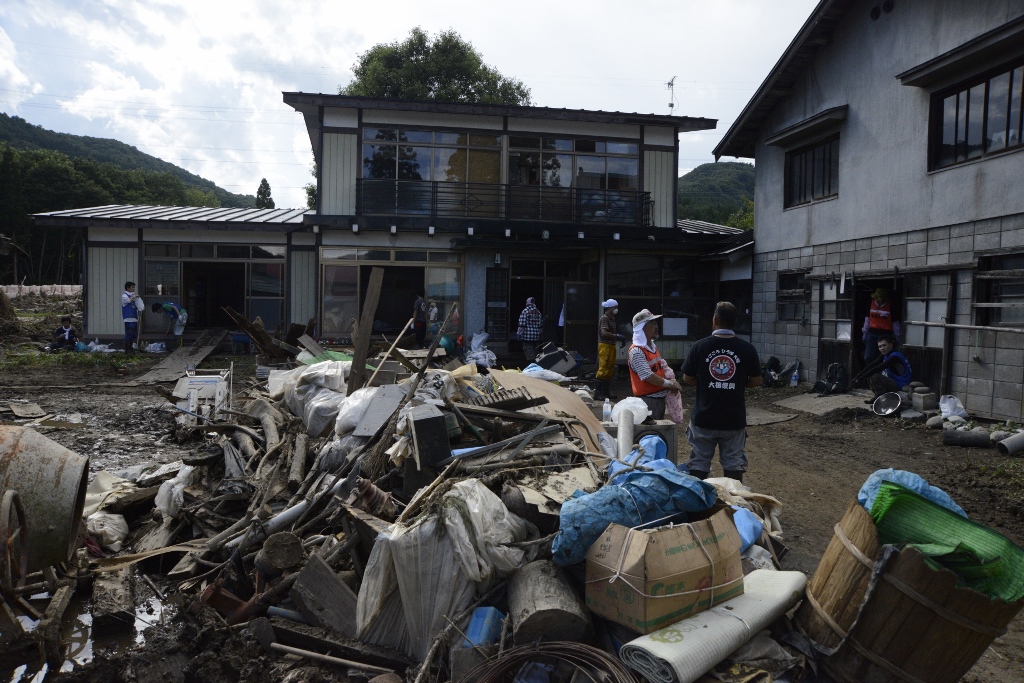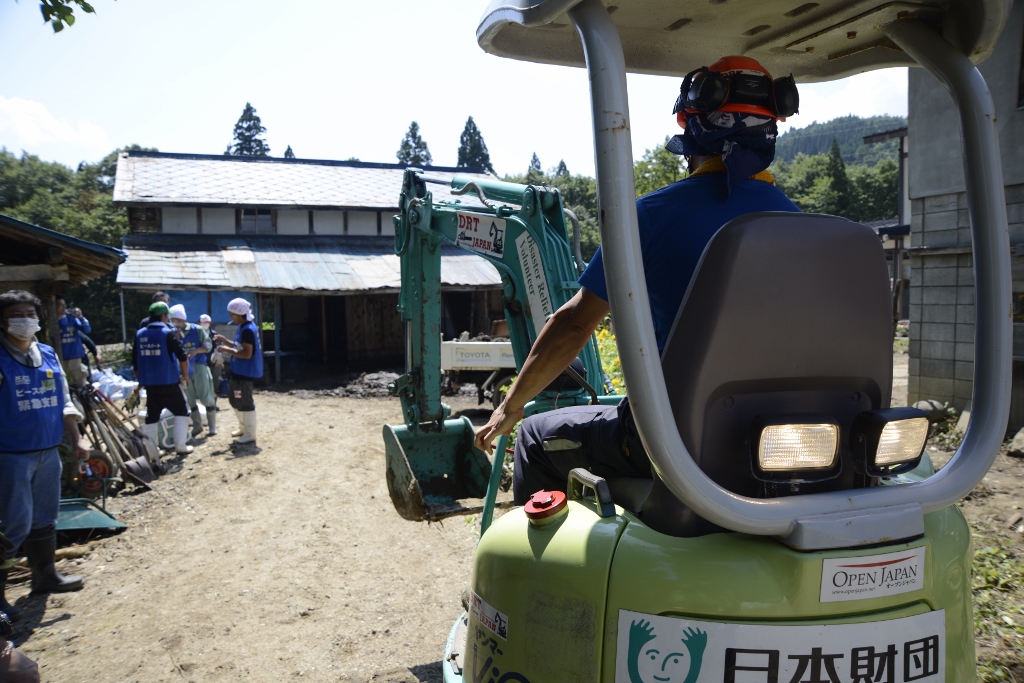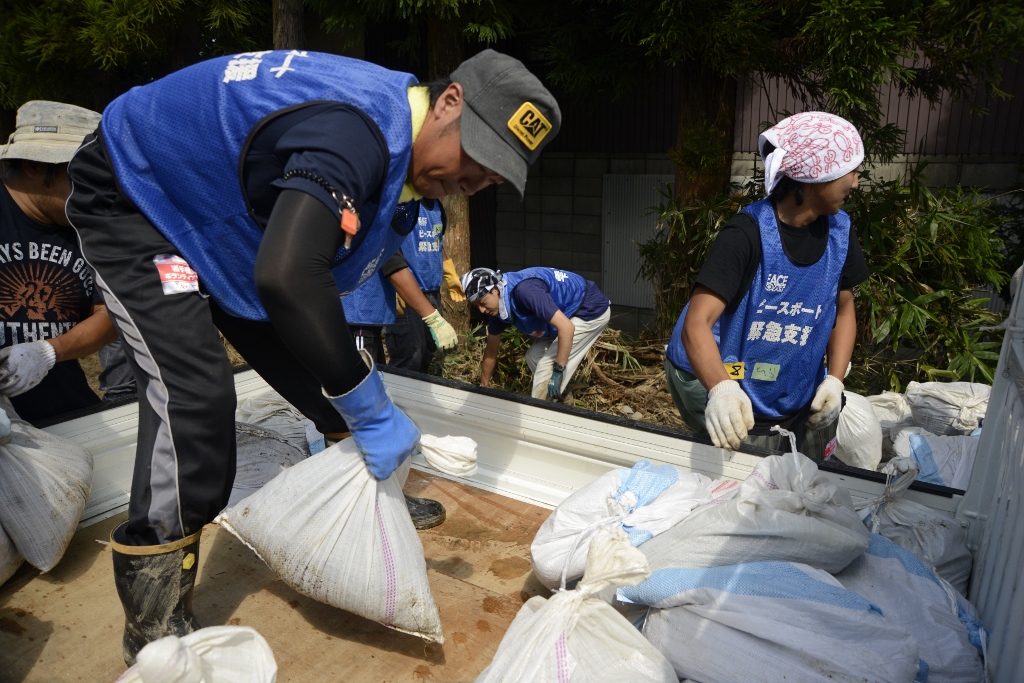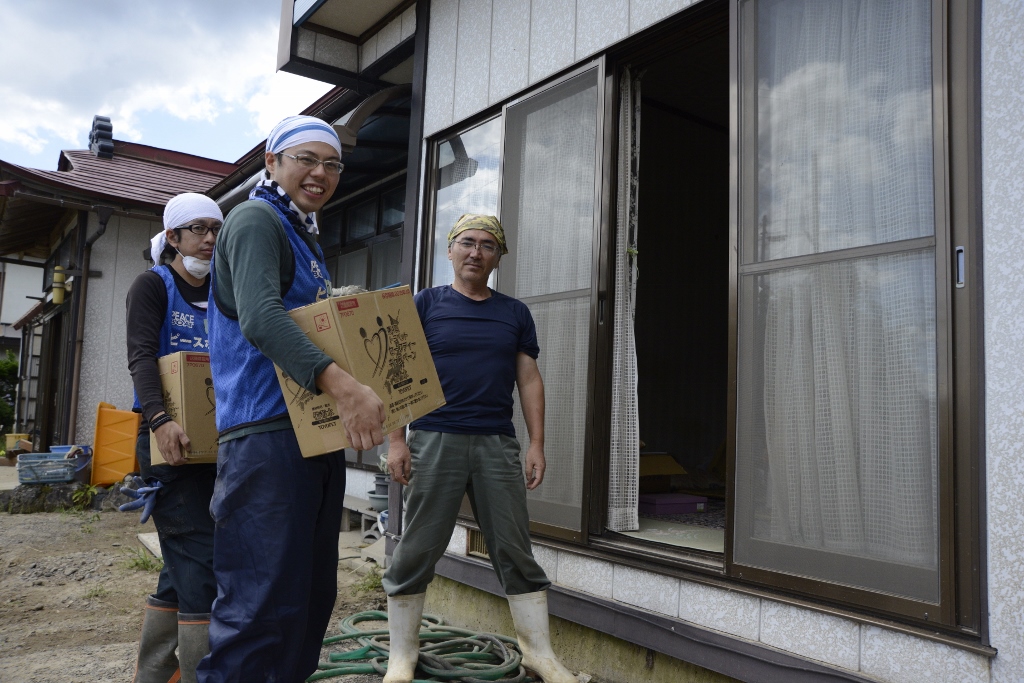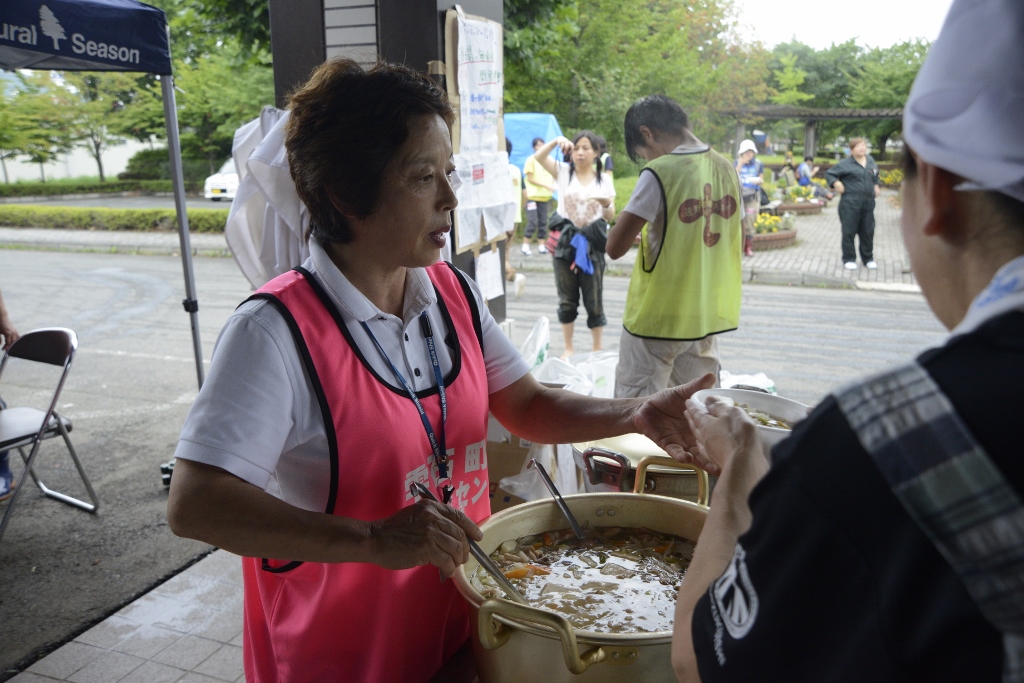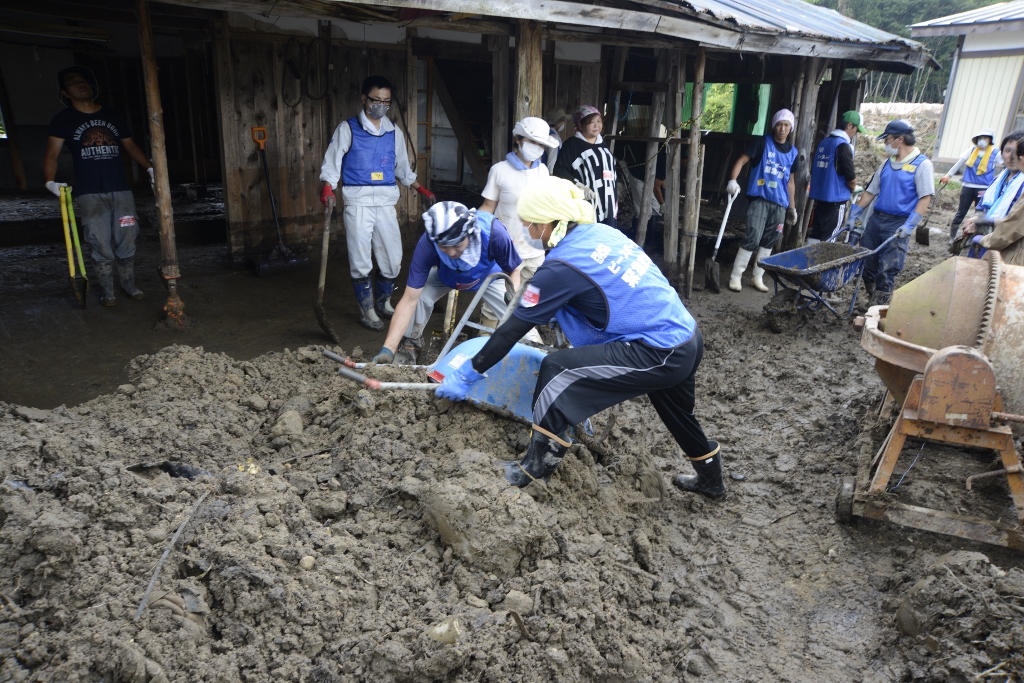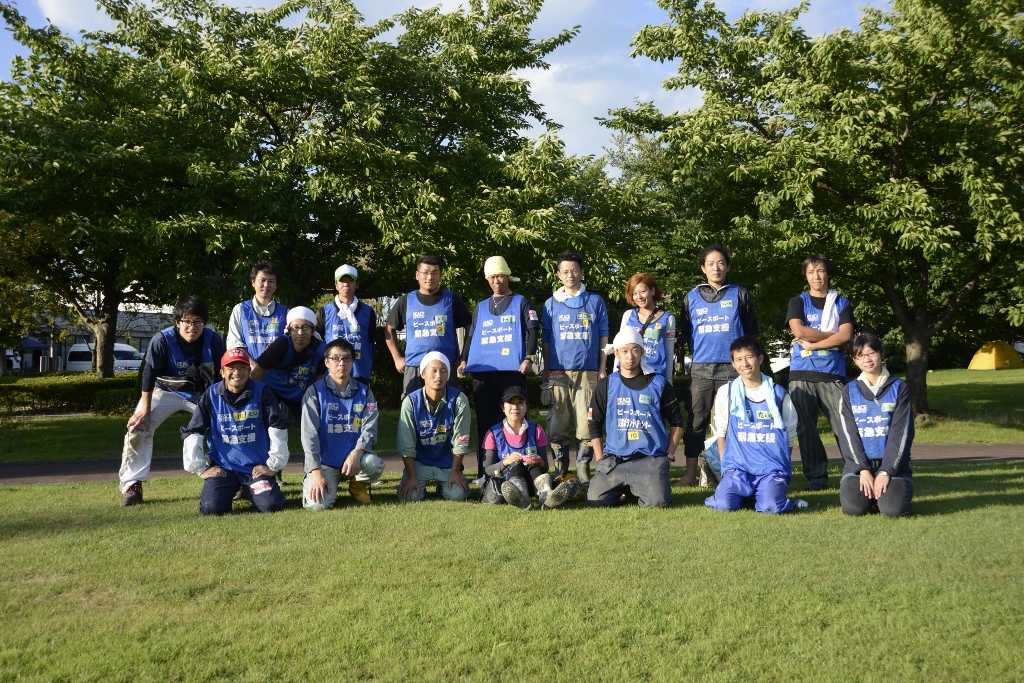
Activity Reports
Iwate Flooding: Relief Activities Report
September 21, 2013
On August 9th, Akita and Iwate Prefectures were affected by heavy rainfall; over 1000 homes were damaged or destroyed in the resulting flooding and landslides. PBV dispatched an advanced team and after conducting a thorough assessment of the situation on the ground, it was decided that the town of Shizukuishi-cho, Iwate Prefecture, would be the focus of our relief efforts.
Only 10 days prior to this, PBV had commenced relief activities in response to flooding in Yamaguchi Prefecture, on the southern tip of Honshu. Despite many resources going to these activities on the other side of the country, the number of volunteers who came to assist in Iwate was significant, thanks to volunteers from within the Tohoku region, including fishermen and students from Ishinomaki City.
The project focused on the clean-up of flooded homes in the area and during the course of the project, we were able to contribute 178 volunteer work days to the local relief efforts.
We had generous support from the following organisations/corporations; The “Share Happiness Club” from the Tokyo Kaijyou Nichidou Kasai Hoken Insurance Company made considerable monetary contributions, Tokyo Toyopet donated emergency drinking water and Lush Japan provided body soap for the affected communities.
Throughout the summer, PBV has responded to three domestic disasters, all of which were caused by heavy rainfall and flooding. Throughout our projects in Shizuoka, Yamaguchi and Iwate Prefectures, we have been very fortunate to have had the support of a wide range of people and organisations.
Here is a brief message from the Project Coordinator in Iwate Prefecture, Shoichi Suzuki:
“Right from the start, we were worried that there would not be enough volunteers to get the job done. However, we made the most of our resources and made a positive impact on the ground. Among the volunteers who took part, there were survivors of the Great East Japan Earthquake and workers from the Social Welfare Council, among a number of other passionate and driven individuals.
Many of the volunteers were from Tohoku and had lived through the 3.11 disaster; others had first-hand experience of relief work in their own affected communities. One of these volunteers, a survivor from Ishinomaki said that “I was helped by so many people in March 2011; now, I want to return the favour to our neighbours in Tohoku”.
As Japan’s population ages, especially in rural areas, the ability for communities to respond to disasters without external resources is likely to gradually decline. Inter-community and inter-regional ties must continue to strengthen in order to ensure that disaster-affected areas receive all necessary forms of support. This project provides a prime example of this as communities in Tohoku pooled resources and supported each other in the wake of this disaster in Iwate.
Finally, I would like to express my thanks to the many people involved in making this project a success; the volunteers involved in both the relief activities and fundraising, the many generous individuals and organisations who donated materials and funds, the Shizukishi-cho Social Welfare Council and the wonderful people of Shizukuishi-cho.”




